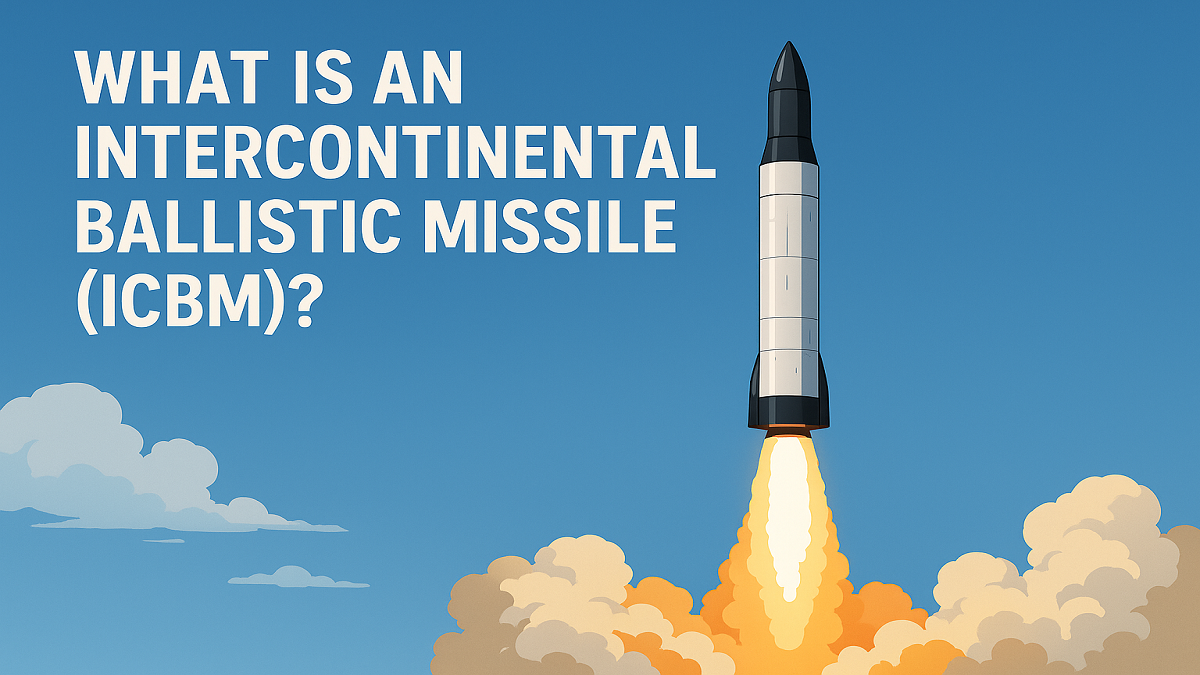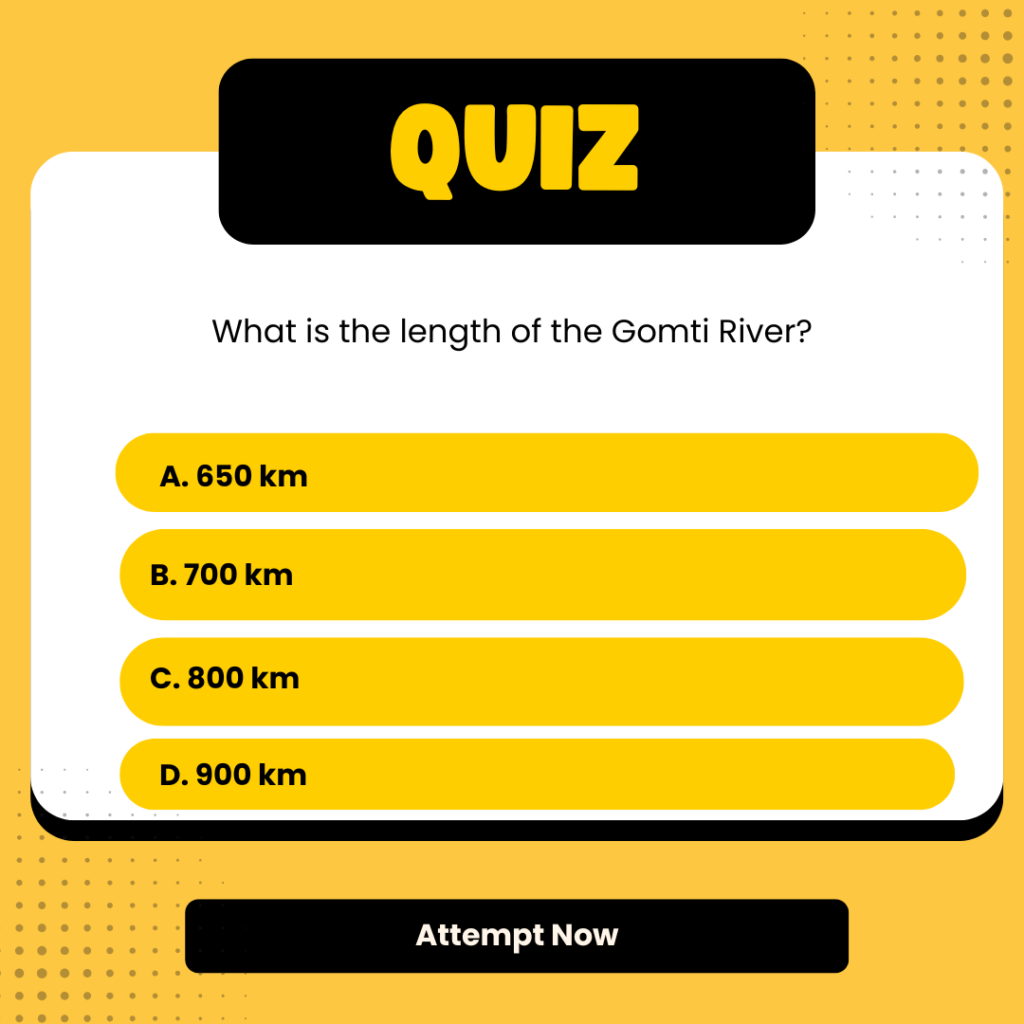What is an Intercontinental Ballistic Missile (ICBM)?
Intercontinental Ballistic Missiles are a special category of ballistic missiles with a range of over 5,500 km (3,400 miles). They are primarily designed to deliver nuclear warheads across continents and play a central role in global strategic deterrence.
What is the Meaning and Purpose of ICBMs?
The purpose of an ICBM is to ensure a country can respond to or deter nuclear threats by possessing long-range, high-impact missiles. Their capability to carry Multiple Independently targetable Re-entry Vehicles (MIRVs) makes them extremely powerful — one missile can hit multiple targets.
How Do ICBMs Differ from Other Ballistic Missiles?
| Type | Range |
|---|---|
| Tactical Ballistic Missile (TBM) | < 300 km |
| Short-Range Ballistic Missile (SRBM) | 300 – 1,000 km |
| Medium-Range Ballistic Missile (MRBM) | 1,000 – 3,500 km |
| Intermediate-Range Ballistic Missile (IRBM) | 3,500 – 5,500 km |
| Intercontinental Ballistic Missile (ICBM) | > 5,500 km |
How Fast Can an ICBM Travel?
ICBMs can reach speeds of Mach 20 or more (that’s 24,000 km/h or ~15,000 mph). This hypersonic speed makes detection and interception extremely challenging.
What is the Maximum Range of ICBMs?
- Minimum ICBM Range: 5,500 km
- Maximum ICBM Range: Over 15,000 km depending on payload and launch platform
- Example: Russia’s RS-28 Sarmat reportedly has a range of up to 18,000 km
Which Is the Fastest ICBM in the World?
Some of the fastest ICBMs in service include:
- Russia’s Avangard Hypersonic Glide Vehicle (attached to an ICBM): Speeds over Mach 20
- China’s DF-41: One of the fastest and most mobile ICBMs, reaching Mach 25
How Does an ICBM Work?
ICBMs operate in three stages:
- Boost Phase – Engines fire to launch the missile into space.
- Midcourse Phase – Missile coasts through space; MIRVs separate if present.
- Terminal Phase – Warheads re-enter the atmosphere at hypersonic speed to strike targets.
What Are the ICBM Launch and Flight Stages?
| Phase | Details |
|---|---|
| Boost Phase | Lasts ~3 minutes, fuel burns to push the missile into space |
| Midcourse Phase | Longest phase; warheads travel in vacuum |
| Terminal Phase | Reentry and detonation; targets are hit within minutes |
What Guidance Systems Are Used in ICBMs?
- Inertial Navigation System (INS) – Main navigation based on motion sensors
- GPS – Improves precision in modern variants
- Star Trackers/Terminal Homing – Help fine-tune accuracy during descent
Which Countries Have Developed ICBMs?
Countries with operational ICBMs (as of 2025):
- United States
- Russia
- China
- France
- United Kingdom
- India
- North Korea
- Israel (alleged)
Pakistan is a nuclear power but does not possess ICBMs.
What is the History of ICBM Development?
- The first ICBM was the R-7 Semyorka, developed by the Soviet Union in 1957.
- The technology quickly became central to Cold War-era nuclear deterrence.
List of Countries with Operational ICBMs (2025)
| Country | Notable ICBMs |
|---|---|
| USA | Minuteman III, Sentinel |
| Russia | RS-28 Sarmat, Topol-M |
| China | DF-41, DF-5B |
| India | Agni-V, Agni-VI (in dev.) |
| North Korea | Hwasong-17, Hwasong-18 |
| France | M51 SLBM |
| UK | Trident II (via shared program) |
| Israel | Jericho III (alleged) |
Comparison of ICBM Capabilities by Country
Modern ICBMs differ in:
- Payload: Number and size of warheads
- Launch method: Silo, mobile, or submarine
- Speed and stealth: Use of decoys and glide vehicles
Top ICBMs in Service Today (2025)
- Russia – RS-28 Sarmat
- USA – Minuteman III (soon to be Sentinel)
- China – DF-41
- India – Agni-V
- North Korea – Hwasong-17
ICBMs and Nuclear Deterrence
ICBMs are a pillar of nuclear deterrence strategy. The ability to retaliate with massive force prevents nations from initiating a nuclear attack.
ICBM Defense Systems
- THAAD (USA)
- Aegis Ballistic Missile Defense
- S-500 (Russia)
These systems attempt to intercept ICBMs, especially during the midcourse or terminal phase.
Impact of ICBMs on Global Security
While ICBMs maintain a balance of power, they also escalate arms races and heighten geopolitical tensions. Their existence remains a complex issue of deterrence vs. destruction.
Latest ICBM Tests by North Korea
North Korea tested the Hwasong-18 ICBM in early 2025, demonstrating solid-fuel capability and expanded range, alarming several global powers.
Advancements in ICBM Technology
- Hypersonic glide vehicles
- Artificial intelligence in guidance
- Mobile launch systems for stealth
ICBM Treaties and International Agreements
- SALT I & II (USA–USSR)
- START Treaties
- New START (2021–2026)
- Nuclear Non-Proliferation Treaty (NPT)
These aim to reduce global stockpiles and prevent nuclear war.




 Indian Navy to Commission First Indigeno...
Indian Navy to Commission First Indigeno...
 Rajnath Singh Inaugurates 125 Border Inf...
Rajnath Singh Inaugurates 125 Border Inf...
 DRDO Transfers Seven Indigenous Technolo...
DRDO Transfers Seven Indigenous Technolo...







